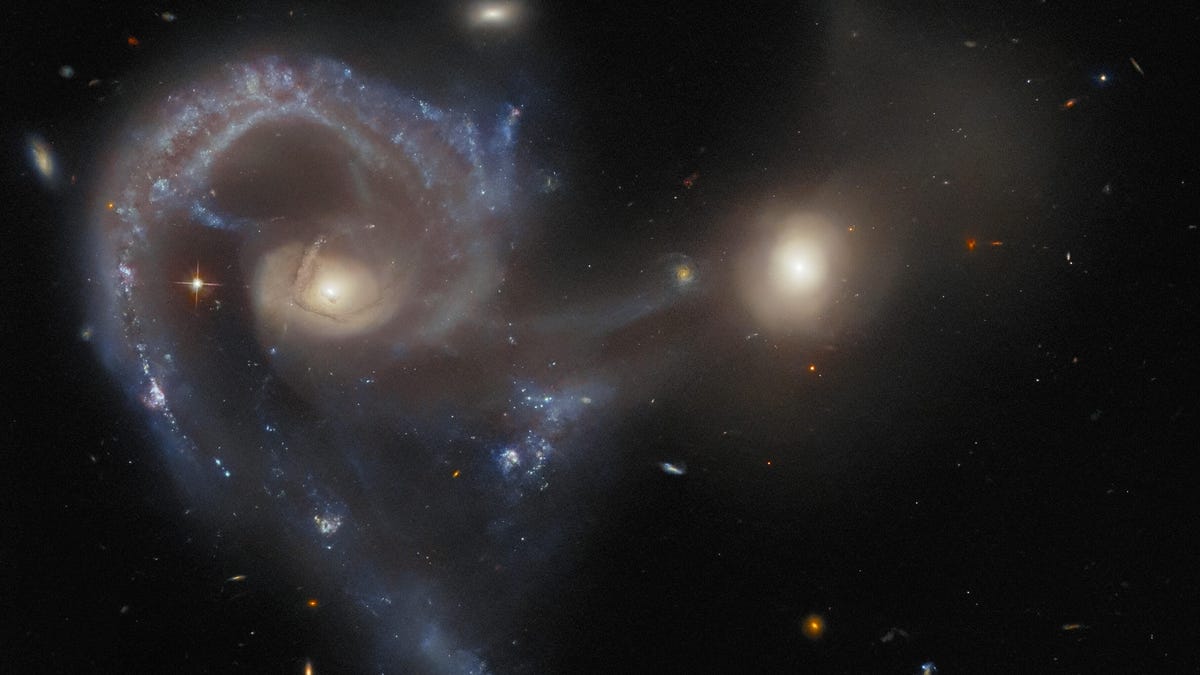Peculiar Galaxies Collide in Haunting NASA Hubble View
Let this gorgeous galactic pair stare into your soul from deep in space.
Have you ever looked at an image taken by the Hubble Space Telescope and gotten the feeling you were being watched? Take a gander at Hubble's view of galaxy pair Arp 107 and you might get the sensation of two celestial eyes peering back.
NASA shared the extraordinary Hubble image on Friday. The two "eyes" are two different galaxies in the process of colliding. No, life in space isn't neat and tidy, even for structures as large as galaxies -- they do indeed sometimes run into each other.
The large galaxy on the left is a Seyfert galaxy, a type of galaxy named for astronomer Carl Seyfert, who described a category of "active" spiral galaxies back in 1943 (PDF). These bright galaxies have supermassive black holes at their centers and pump out lots of radiation. NASA estimates that 10% of all galaxies may be Seyfert galaxies.
In Hubble's image, the Seyfert galaxy is a spectacular sight. Note the blue spiral and the lanes of foglike dust. But in a galactic collision, it takes two to tango. "The smaller companion (right) connects to the larger galaxy by a tenuous seeming 'bridge' of dust and gas," said the European Space Agency (Hubble is a joint project from NASA and ESA).
Arp 107 gets its name from astronomer Halton Arp, creator of the Atlas of Peculiar Galaxies. That might sound like the title of a rollicking young-adult sci-fi novel, but it's actually a catalog of 338 strange and delightful galaxies, curated by Arp and released in 1966. Think of it as being like an Audubon guide to oddball galaxies. Arp 107 was a worthy entry, thanks to the galaxies' interactions with each other and the "bridge" between them.
Arp 107 is located 465 million light-years from Earth. The Hubble image shows how the elder space telescope continues to wow with views of the cosmos, more than three decades after it launched.


